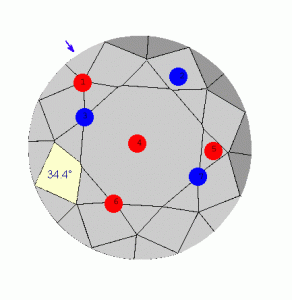I came across this in an old thread. Is it really the development chart for the HCA? If so, has there been any further research into the the upper-center region? Why does a diamond with a 36 degree crown angle get a better score as the pavilion angle increases? Why is there a blue island around the 7.2 and the 7.6? Where can I find the published paper? I think the HCA is a useful tool and I am excited to learn more about the methods behind it.

















300x240.png)